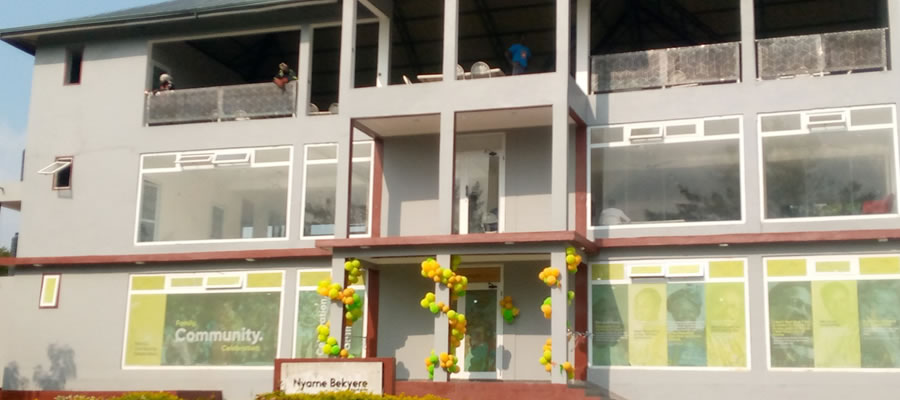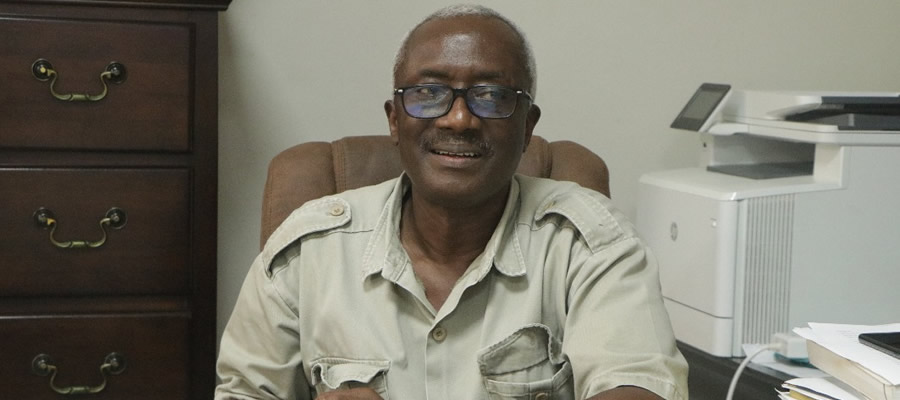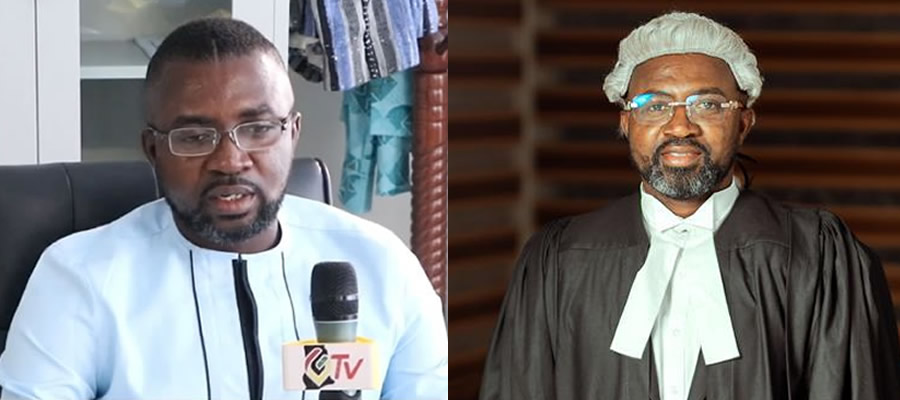

Establishment of the Municipal Assembly
The Akuapem North Municipal Assembly (A.N.M.A) was first established as a District Assembly by Legislative Instrument 1430 in 1988 under the decentralization system to take control of the day-to-day running of district. In 2012, it was elevated to the status of a Municipality by LI 2124. The Municipal Assembly has been empowered by relevant laws to perform executive, deliberative, and legislative functions for the development of the Municipality. It is indeed the highest political authority in the Municipality.
Political Structure of the Municipal Assembly
The political structure of the Assembly as shown in Figure 1.11 below. The Assembly’s structure is hierarchical. As an organization it works through the Executive Committee and its subsidiary committees of Development Planning, Social Services, Works, Finance and Administration and Justice and Security. There is also the Public Relations and Complaints Committee that falls directly under the office of the Presiding Member. The head of the General Assembly is the Presiding Member and the head of the Executive Committee is the Chief Executive.
Each sub-committee consists of such members of the Assembly determined by the Assembly. Every sub-committee is responsible for collating and deliberating on issues relevant to it as the Assembly may direct for the purposes of assisting the Assembly in its deliberative, executive and legislature functions. The Municipal Assembly is the highest decision-making body and planning authority within its area of jurisdiction. The Assembly consists of thirty two (32) Electoral Areas, 32 Unit Committees and 8 Town and Area Councils. There is only one constituency which is Akropong. The total membership of the Assembly is eighty (49), made up of 32 elected members and 15 government Appointees, a Member of Parliament and a Municipal Chief Executive.
The Assembly members are elected every four years through the Universal Adult Suffrage. The members are expected to keep close contact with their electoral areas, consult their people on issues discussed at the Assembly and collate their views and opinions and present to the Assembly. However, the lack of resources makes it difficult for most of the Assembly members to carry out these responsibilities. As a result, there is absence of grass root participation in local governance in the Municipality. This has resulted in lack of community acceptance and ownership of projects and programmes thus making them not sustainable.
The Assembly members elect one representative among them to serve as the Presiding Member who is the convener and presides over all Assembly meetings. The Presiding Member has two years tenure of office in the first instance and is eligible to stand for re-election for a second term.
Public Relations and Complaints Committee (PRCC)
The Akuapem Municipal Assembly has established the PRCC through ACT 936 which is responsible for educating members of the public on the activities of the Assembly, promoting transparency, probity and accountability in the dealings of the Assembly with the public as well as investigate complaints or allegations made against the conduct of the Chief Executive, members of the Assembly, staff of the Assembly and staff of departments of the Assembly.
Administrative structure of the Assembly
As the chief representative of the Central Government in the Municipality, the Chief Executive is also responsible for the day-to-day performance of the Executive functions of the Assembly. The next in rank after the Chief Executive is the Municipal Co-ordinating Director (MCD), who is a public Servant and is the Secretary to the Assembly. The Co-ordinating Director performs administrative functions in the Assembly and reports directly to the Chief executive. The various departmental heads, units and agencies also report to the Co-ordinating Director.
Decentralized Department of the Assembly
The Municipal Assembly currently has the under listed functional departments established by ACT 936. Municipal Assemblies are by law suggested to have 13 Departments. The Akuapem North Municipal Assembly has 11 of these Departments in operation. The Department of Transport and Department of Natural Resources Conservation are yet to be established. The Central Administration includes the following Units; Budget, Development Planning, Procurement, Human Resource, Sores, Internal Audit, Information Service and Births and Deaths. These are:
1. Central Administration Department
2. Directorate of Education
3. Directorate of Health Services
4. Department of Agriculture
5. Department of Physical Planning
6. Department of Social Welfare and Community Development
7. Department of Municipal Works
8. Department of Disaster Prevention and Management
9. Department of Industry and Trade (REP/BAC)
10. Department of Finance
11. Department of Urban Roads
Sub-District Structures
The Akuapem North Municipal Assembly is divided into eight (8) sub-district councils. These are made up of three (3) Town councils and five (5) Area Councils. The Council is made up of a chairperson elected by the Assembly members, elected members of the Assembly in the Sub-district Council and a number of adult residents in the sub- district Council. The Sub-district Council also has an Administrative Officer who is the secretary to the Council.
The Town and Area Councils are responsible for collecting ceded revenue, implementing bye – laws and performing oversight responsibility over community-initiated projects, among others in their area. However, the operations of the councils have been hampered because of inadequate office accommodation, logistics, administrative staff and lack of remuneration for members of the council and lack commitment on the part of council members. This has made the Town and Area Councils handicapped in their quest to promote grass root participation in local governance at the sub-district level.
The Town/Area Councils in the Municipality are:
1. Akropong Town Council
2. Mampong Town Council
3. Larteh Town Council
4. Mamfe / Amanokrom Area Council
5. Tutu / Obosomase Area Council
6. Adawso Area Council
7. Mangoase Area Council
8. Tinkong / Okorase Area Council
Governance involves participation of the citizenry in decisions affecting their lives. Effective participation in decision making as well as implementing decisions taking can be said to constitute good governance. The Akuapem North Municipality recognizes the existence of groups like Non-Governmental Organizations (NGO’s), Faith Based Organizations (FBO’s) and Civil Society Organizations who can contribute effectively to the development of the municipality. They are major stakeholders in the governance of the Municipality and therefore would be effectively used in areas such as problem identification, prioritizing of projects and programmes, implementation and monitoring of Assembly projects and programmes.
Natural and Man-made Disasters
The management of disaster in the Municipality is through the National Disaster Management Organization (NADMO). The Organization has been involved in the education of the populace on disaster management and prevention in various communities and market places. The activities of the Organization have led to the identification of some flood prone areas in the Municipality ie Adawso, Kwamoso, Yensiso, Pakro Junction, Aboabo, Mile 42, Tinkong, Okyerekrom. Residents of these areas are given intensive disaster management sensitization to educate them and also encouraged to keep drains and culverts clean to facilitate easy flow of water. Also, Disaster Volunteer Groups and Disaster Volunteer Clubs have been formed at various zones and schools ((both basic and senior high schools) to support disaster prevention.
Hazards or disasters identified in the Municipality included pests and insect infestation, disease epidemics, fires and lightening, hydro-meteorological, geological and man-made fire, flooding, landslides and drought. However, a number of disasters had occurred during the planned period, notable among them were fire outbreaks (domestic, Senior High Schools and farms), floods, frequent road accidents, electrocutions, severe droughts, etc. The occurrence of flooding is common in areas such as Korkormu, Kwamoso, Saforo, Atwetwerede, and Tinkong e which have been identified as flood prone areas.
Natural Resource Utilization
The Municipality’s natural resources which include land and other resources like water falls, stones, forests, etc. constitute major resources for the growth and development of the area. In order to achieve our long term development aspirations, the environment and natural resources has been managed sustainably so as not to serve as a constraint on development and also endanger the livelihood of the future generation. Currently, the timber and other forest resources, gravel stones, and sand are being exploited with environmentally friendly technologies to support physical, economic and social infrastructure development.
Date Created : 11/23/2017 12:49:54 AM













 facebook
facebook
 twitter
twitter
 Youtube
Youtube
 +233 593 831 280
+233 593 831 280 0800 430 430
0800 430 430 GPS: GE-231-4383
GPS: GE-231-4383 info@ghanadistricts.com
info@ghanadistricts.com Box GP1044, Accra, Ghana
Box GP1044, Accra, Ghana